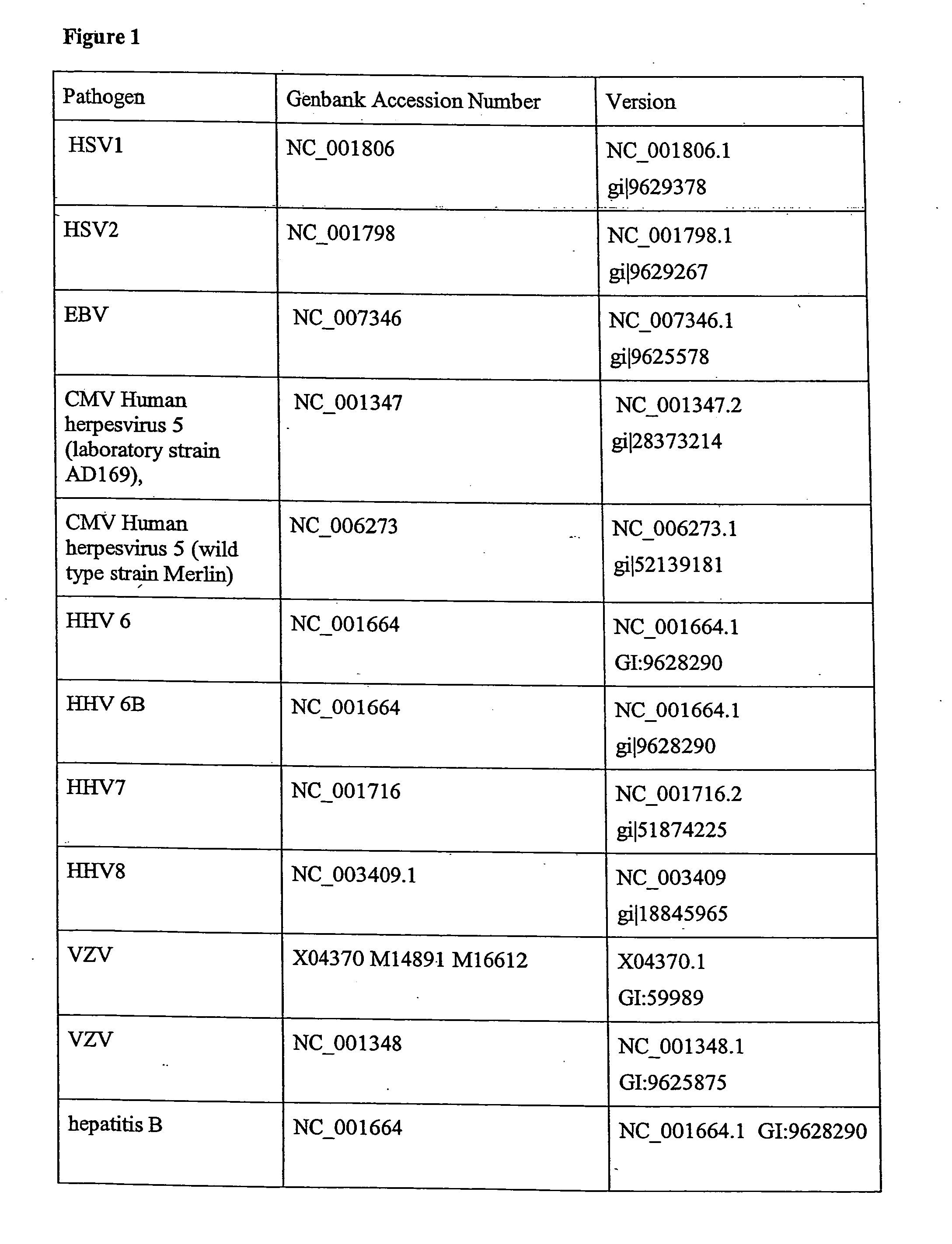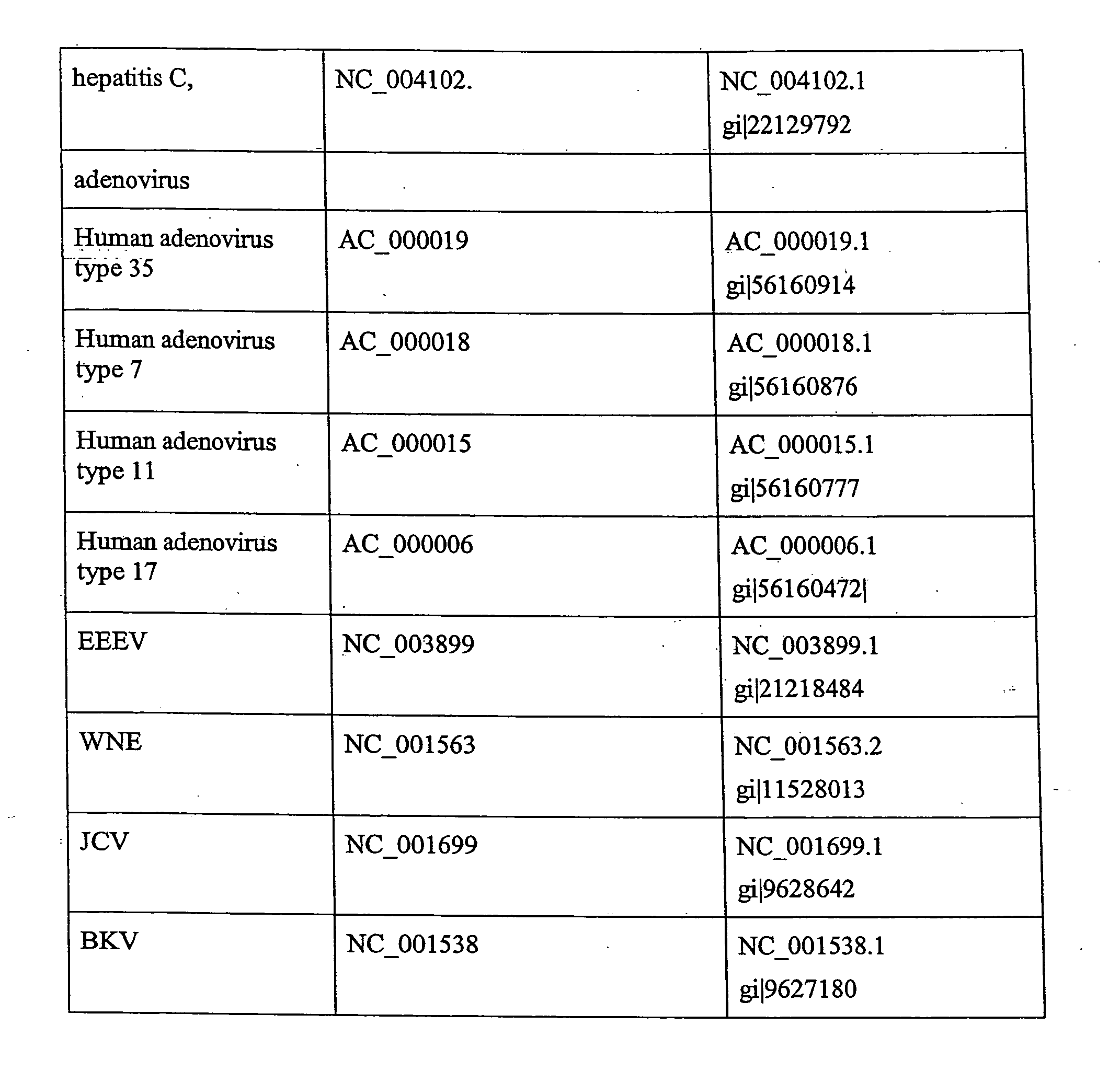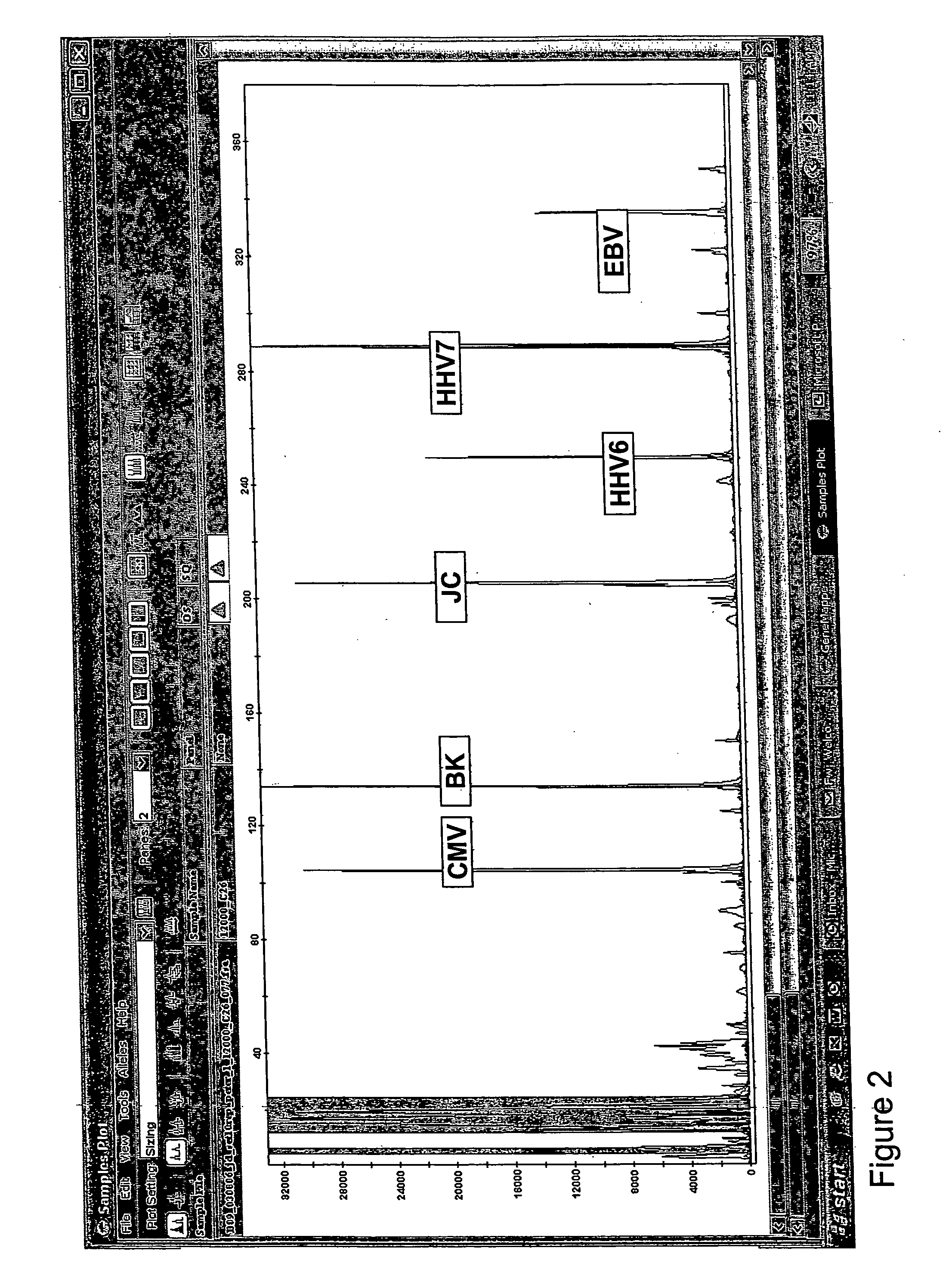Multiplexed quantitative detection of pathogens
- Summary
- Abstract
- Description
- Claims
- Application Information
AI Technical Summary
Benefits of technology
Problems solved by technology
Method used
Image
Examples
example 1
Oligonucleotide Design and Synthesis
[0289] Primers are selected using PrimerSelect software (DNASTAR Inc, Madison, Wis.) based on the following criteria:
[0290] 19-24 nucleotides in length; Melting temperature (Tm) 54.5-58.2° C.; primer stability-45.9 to −39.9 kcal per mole; unique primer 3′ sequence of 7 nucleotides; avoiding self-primer and primer pair formation longer than 2 contiguous bases (ignoring duplexing 8 bases from 3′ end); avoiding internal primer hairpins longer than 2 bases; with minimal 3′ pentamer stability of −8.5 kcal per mole or more.
[0291] In addition, selected primer pairs are assessed for dimer formation in multiplex across different pairs to eliminate any potential dimers with stability less than −6.0 kcal per mole. Furthermore, primers are screened against none-redundant DNA database (Gene Bank, NCBI) using BLAST search program to eliminate any primers with significant (greater than 14 contiguous nucleotides over or 10 contiguous nucleotides from 3′-end) h...
example 2
PCR Amplification and End Detection of Microorganisms
A. One-Step RT-PCR Detection of Microorganism RNA Using Microorganism-Specific Primers
[0292] RNA template is added to the reaction mixture containing 0.25 uM of each RT primer (optional), 0.25 uM of gene-specific PCR primers (one primer of microorganism-specific pair labeled with FAM at 5′ end), a modified 1× Stratagene RT-PCR buffer (Brilliant Single Q-RT-PCR kit cat.#600532), 0.1% Triton X100, 0.2 mM DNTP, 1.5 mM MgCl2, and 1.25U of StrataScript RTase (Stratagene, La Jolla, Calif.) in a total volume of 50 or 100 ul, and overlaid with a mineral oil. Reverse transcription is conducted at 45° C. for 50 min, followed by 2 min incubation at 94 C to inactivate the RTase. Samples are then PCR amplified using a protocol consisting of 44 cycles of 94° C. for 30 seconds, 60° C. for 30 seconds and 72° C. for 1 minute. While ramping up to the first 72 C extension, 1U of thermostable DNA polymerase (Vent exo(−) (New England Biolabs)) is a...
example 3
PCR Amplification and Real-Time Detection of Microorganisms
A. One-Step RT-PCR Detection of Microorganism RNA Using Gene-Specific Primers.
[0296] Briefly, in a total volume of 50 or 100 ul, RNA sample (1-5 ul) is added to the reaction mixture containing 0.25 uM of each RT primer (optional), 0.25 uM of microorganism-specific PCR primers (one primer of microorganism-specific pair labeled with FAM at 5′ end), a modified 1× Stratagene RT-PCR buffer (Brilliant Single Q-RT-PCR kit cat.#600532), 0.1% Triton X100, 0.2 mM dNTP, 1.5 mM MgCl2, and 1.25U of StrataScript RTase (Stratagene, La Jolla, Calif.) and overlaid with a mineral oil. Reverse transcription is conducted at 45 C for 50 min, followed by 2 min incubation at 94° C. to inactivate the RTase. Samples are then PCR amplified using a protocol consisting of 44 cycles of 94° C. for 30 seconds, 60° C. for 30 seconds and 72° C. for 1 minute. While ramping up to the first 72° C. extension, 1U of thermostable DNA polymerase (Vent exo(−) (N...
PUM
| Property | Measurement | Unit |
|---|---|---|
| Volume | aaaaa | aaaaa |
| Volume | aaaaa | aaaaa |
| Volume | aaaaa | aaaaa |
Abstract
Description
Claims
Application Information
 Login to View More
Login to View More - R&D
- Intellectual Property
- Life Sciences
- Materials
- Tech Scout
- Unparalleled Data Quality
- Higher Quality Content
- 60% Fewer Hallucinations
Browse by: Latest US Patents, China's latest patents, Technical Efficacy Thesaurus, Application Domain, Technology Topic, Popular Technical Reports.
© 2025 PatSnap. All rights reserved.Legal|Privacy policy|Modern Slavery Act Transparency Statement|Sitemap|About US| Contact US: help@patsnap.com



